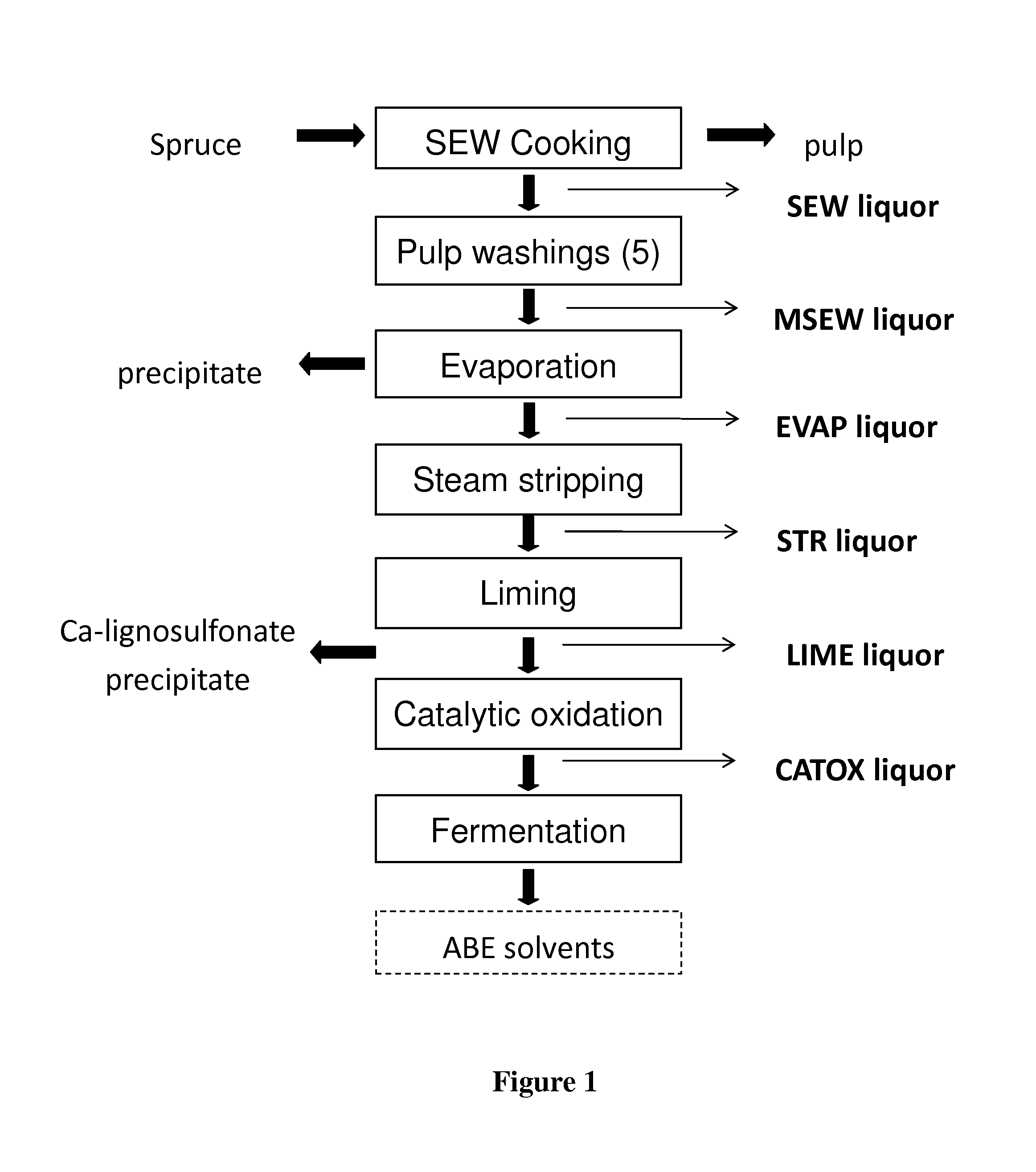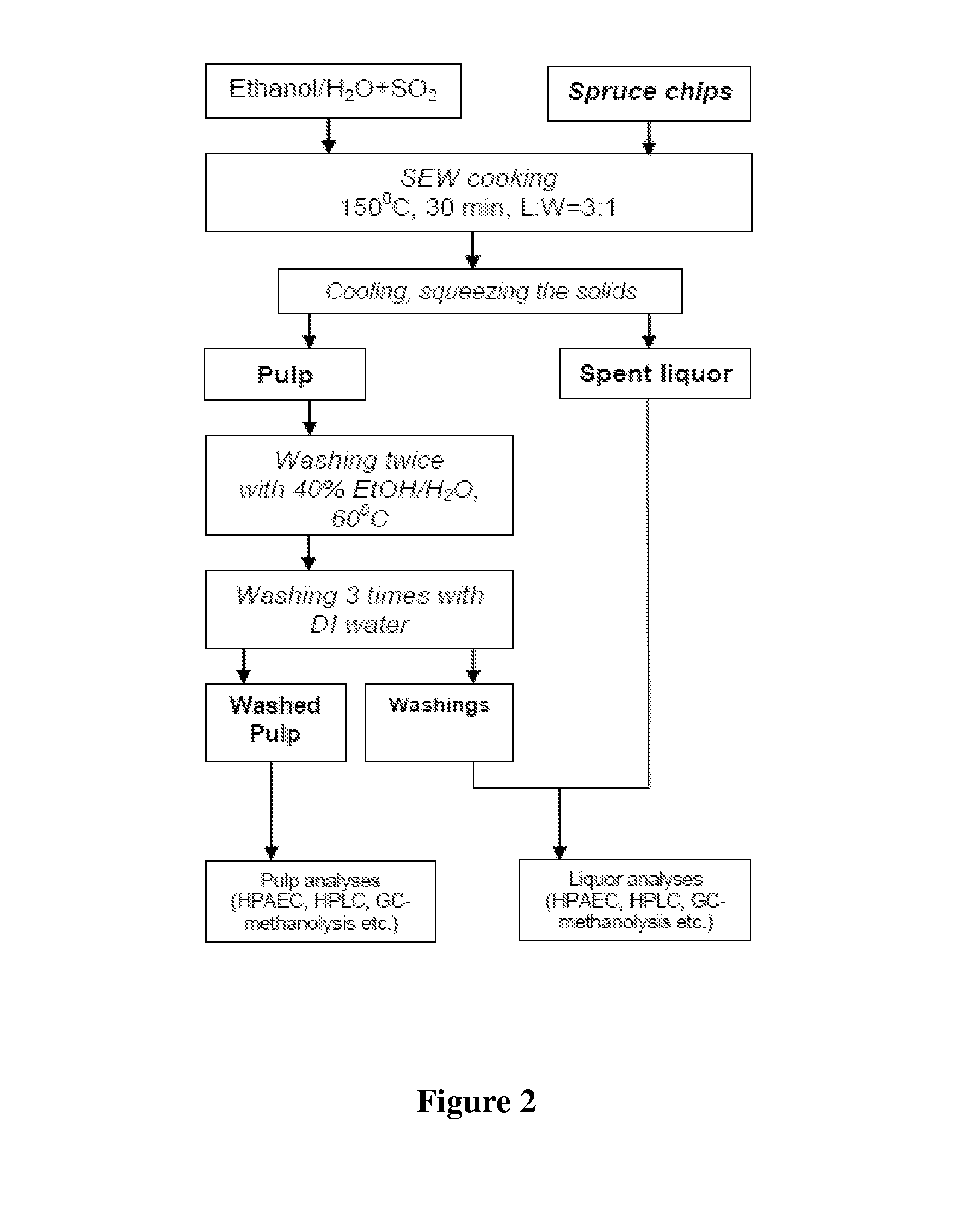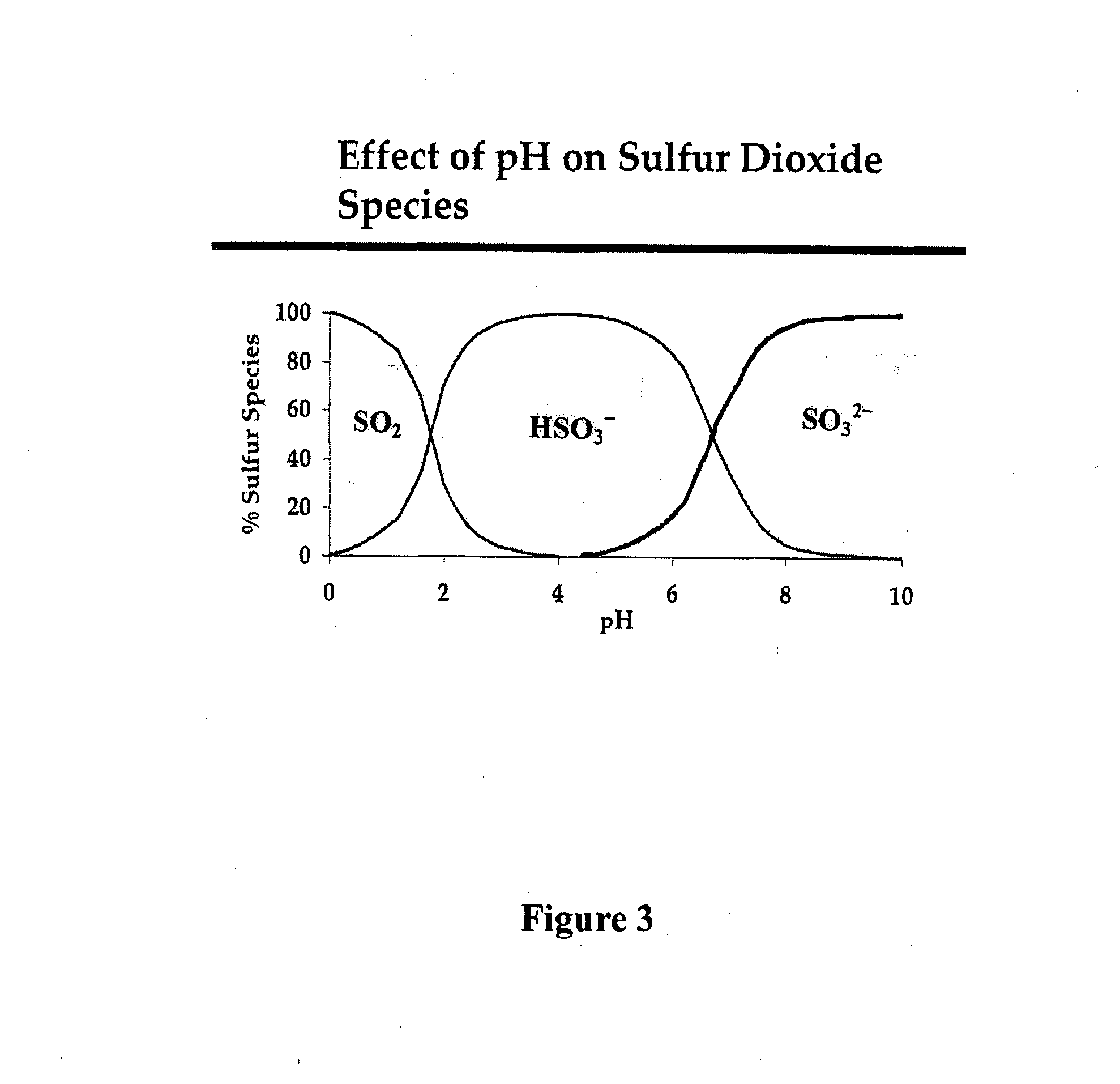Conditioning of so2-ethanol-water spent liquor for fermentation by clostridia
a technology of clostridia and spent liquor, which is applied in the direction of spent liquor concentration, biofuels, pulp by-product recovery, etc., can solve the problem that it is not possible to remove the above-mentioned inhibitors in such a degr
- Summary
- Abstract
- Description
- Claims
- Application Information
AI Technical Summary
Benefits of technology
Problems solved by technology
Method used
Image
Examples
Embodiment Construction
[0008]The present invention describes the SO2-ethanol-water (SEW) fractionation of lignocellulosics followed by a series of process steps which “condition” the SEW spent liquor so that the dissolved lignin is recovered by precipitation and the dissolved hemicellulose wood sugars are hydrolysed to monosugars. The final liquid contains minimal amounts of inhibitors for fermentation of the monosugars to butanol, ethanol, isopropanol and acetone.
[0009]SEW fractionation is a method to fractionate lignocellulosics into its main components (cellulose, hemicellulose and lignin). The fractionation is carried out at moderate conditions by utilizing a 55% (v / v) ethanol-water solution in which high purity SO2 is dissolved without any base (Na, Mg, Ca, etc.). This method offers significant advantages over other conventional pulping methods; the presence of high purity ethanol in the ethanol-water solution leads to rapid impregnation of the chips, thereby eliminating a long heat-up time which is ...
PUM
| Property | Measurement | Unit |
|---|---|---|
| concentrations | aaaaa | aaaaa |
| concentrations | aaaaa | aaaaa |
| pH | aaaaa | aaaaa |
Abstract
Description
Claims
Application Information
 Login to View More
Login to View More - R&D
- Intellectual Property
- Life Sciences
- Materials
- Tech Scout
- Unparalleled Data Quality
- Higher Quality Content
- 60% Fewer Hallucinations
Browse by: Latest US Patents, China's latest patents, Technical Efficacy Thesaurus, Application Domain, Technology Topic, Popular Technical Reports.
© 2025 PatSnap. All rights reserved.Legal|Privacy policy|Modern Slavery Act Transparency Statement|Sitemap|About US| Contact US: help@patsnap.com



